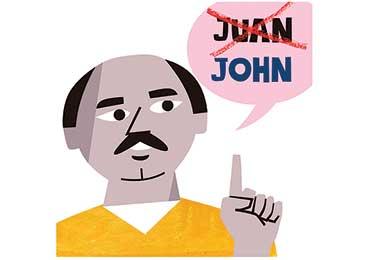Leah Boustan ’00 has been fascinated with U.S. history and government since she was a teenager. She found her calling on her high school debate team.
“We had to spend all year thinking about how we should reform the health-care system, how we should reform the immigration system. That’s what sparked my interest in policy-related questions,” she says.
For much of the past decade, the economics historian and Princeton professor has focused on immigration. Applying sophisticated computer algorithms to newly digitized census data and other historical records, Boustan tracks thousands of individuals through time — specifically between 1850 and 1924, when 30 million Europeans moved to the United States — to identify historical trends to apply to modern questions about migration: How quickly do people advance and assimilate? And what does that mean for our society?
Boustan’s Work: A Sampling

MOVIN’ ON UP It’s a common turn-of-the-century trope: An immigrant arrives with mere pennies and advances from the mail room to the boardroom. “You often hear criticism of immigrants today that they’re slower to learn English or that they’re not able or not trying to move up economically,” Boustan says. By studying the trajectories of foreign-born workers during the mass-migration period and comparing them with today’s immigrants, Boustan and her collaborators disproved this notion in a 2014 paper. “The pace of occupational advancement is very similar for immigrants from past to present,” she says.

WHAT’S IN A NAME? “Oftentimes the debate on immigration is not only about whether immigrants have good jobs; it’s also about whether they become ‘American,’” Boustan says. In a 2016 working paper, Boustan and others examined the rate of cultural assimilation by analyzing names on census records and birth certificates, reasoning that as immigrants spend more time in the U.S. they are more likely to switch from foreign to Americanized names. The pace of shifting to Americanized names was nearly identical in the past and the present, Boustan says, adding that in California, two-thirds of the immigrants they studied were Mexican — “the group that will often be pointed to as not assimilating.”
CLOSING THE BORDERS After hearing of a proposal to reduce legal immigration by up to 50 percent in an effort to give jobs to working-class Americans, Boustan and her colleagues have been studying what happened in 1924, when quotas cut the number of migrants by nearly 80 percent. “The new set of people [who got jobs] is probably very different from what the policymakers had in mind,” she says. Factories found other cheap labor, namely Mexican workers and black Americans from the South. “I don’t think that’s necessarily what would happen today,” Boustan says, noting that today the workers would likely be replaced by automation or goods would be imported from elsewhere.


